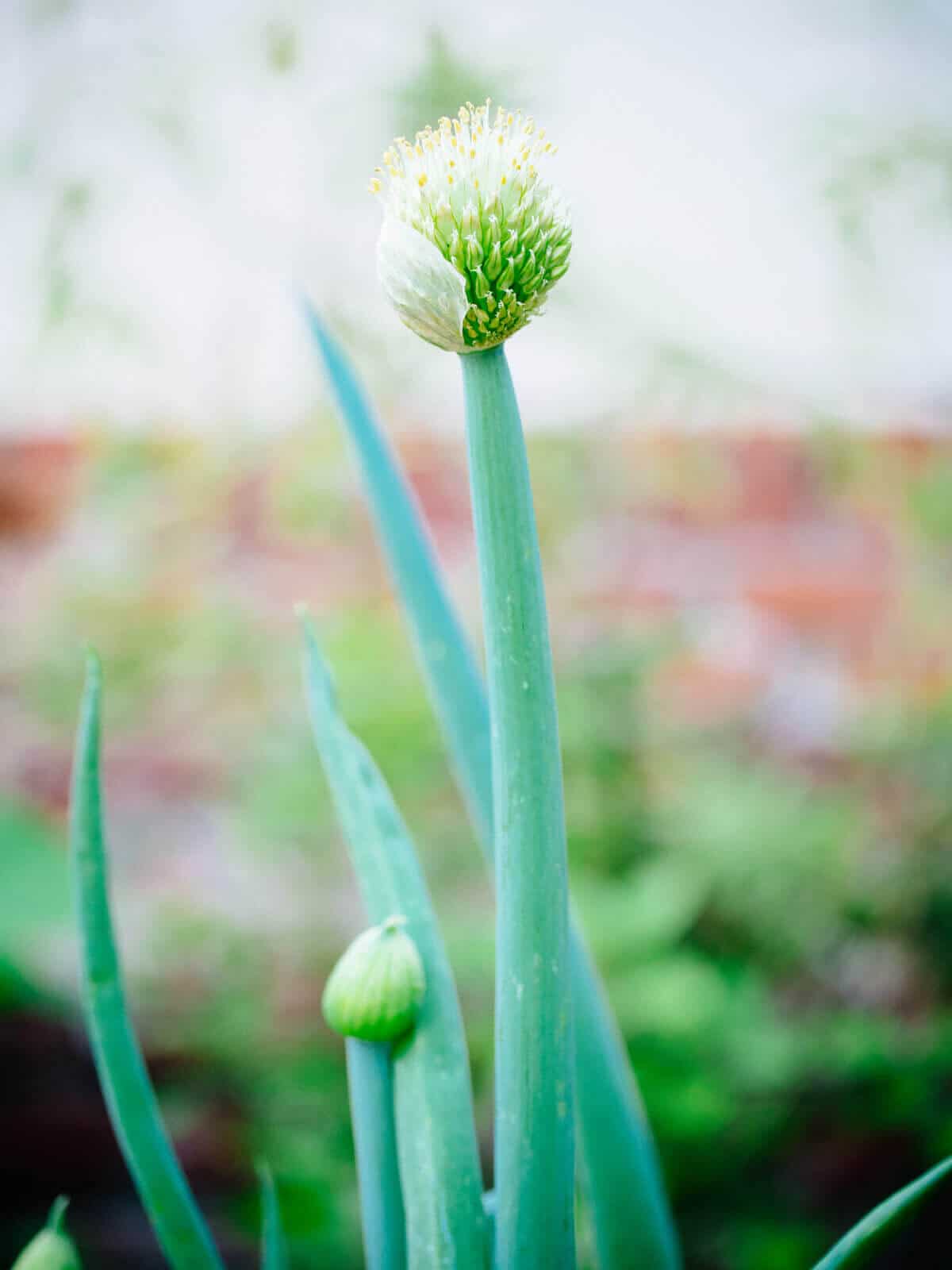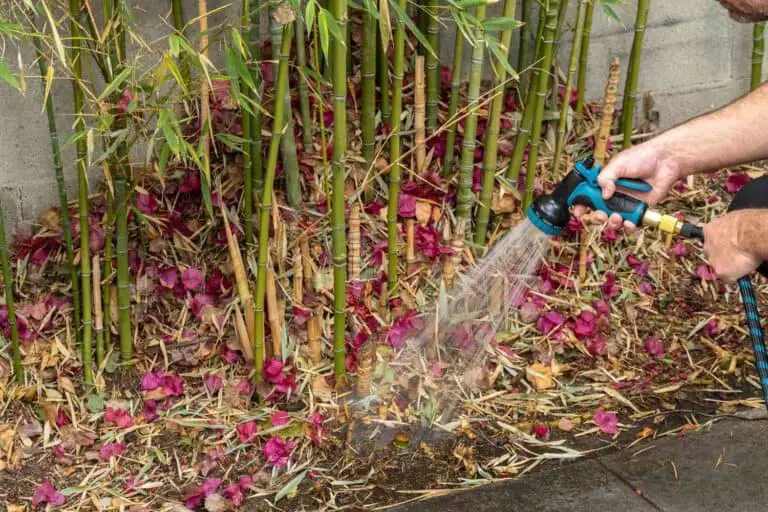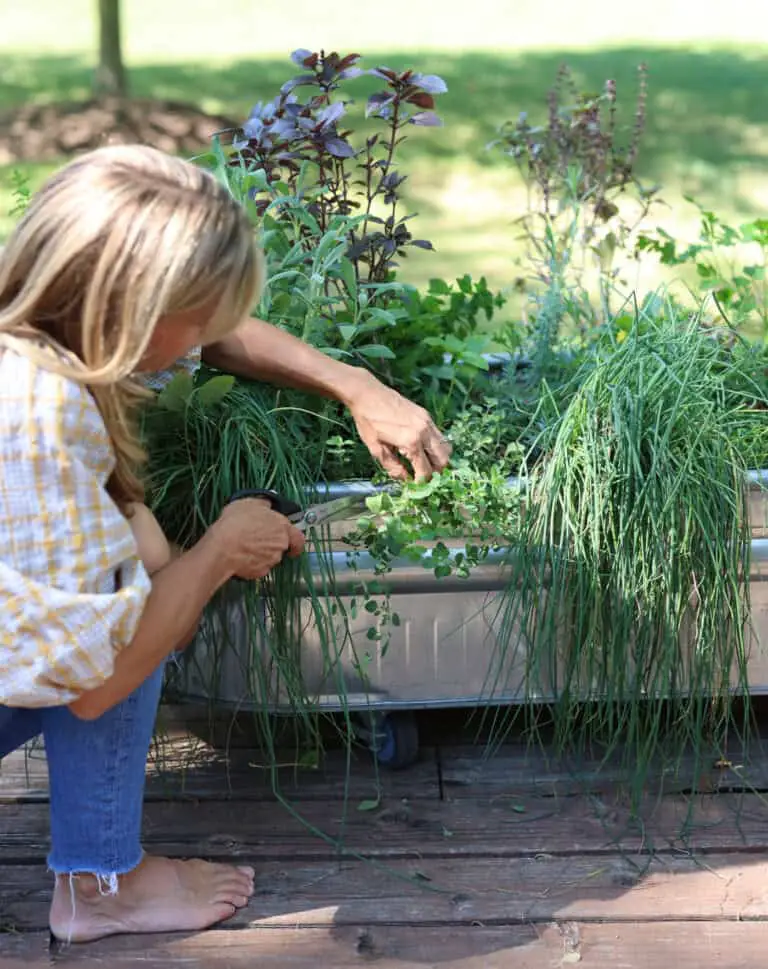What It Means If Your Onion Plant Starts Flowering: Expert Insights
If your onion plant starts flowering, it means the plant is bolting. This usually happens due to stress or temperature changes.
Onions are biennial plants, meaning they typically flower in their second year. However, certain conditions can cause them to bolt prematurely. Temperature fluctuations, especially a sudden cold snap, can trigger this process. Stress factors such as inconsistent watering or poor soil quality can also contribute.
Once an onion plant starts flowering, it focuses its energy on seed production rather than bulb growth. This results in smaller, less flavorful onions. To prevent bolting, ensure stable growing conditions and choose bolt-resistant onion varieties. Proper care and attention can help you achieve a bountiful onion harvest.
Introduction To Onion Flowering
Onions are a staple in many gardens. They are easy to grow and versatile. But what does it mean if your onion plant starts flowering? This is a common question among gardeners.
What Is Onion Flowering?
Onion flowering is when the onion plant produces a tall stalk. This stalk ends with a flower. The flower is usually white or purple. This process is also known as “bolting”.
Why It Happens
Onions flower for several reasons. One main reason is stress. Stress can be caused by changes in the weather. For example, a sudden cold spell can trigger flowering. Another reason is the age of the plant. Older onion plants are more likely to flower.
Let’s look at these reasons in a table:
| Reason | Explanation |
|---|---|
| Stress | Weather changes, like cold spells, can trigger flowering. |
| Plant Age | Older plants are more prone to flowering. |
Flowering can also happen if the onions are not harvested in time. They will flower to produce seeds. This is a natural part of their life cycle.
Understanding why onions flower helps you manage your garden better. You can take steps to reduce stress. You can also ensure timely harvesting. This way, you can enjoy a healthy onion crop.
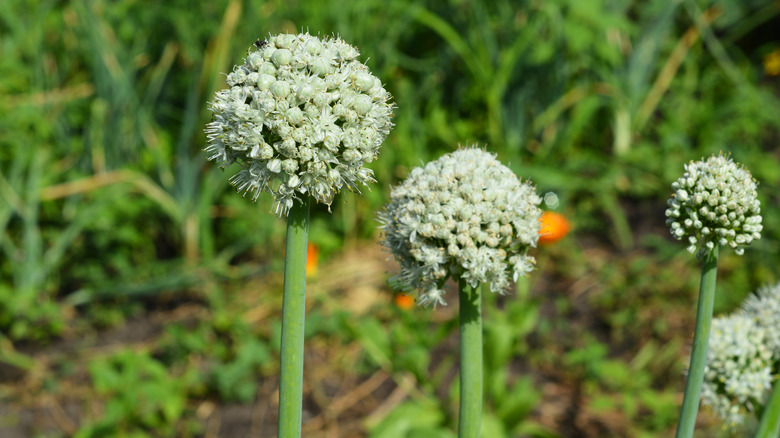
Credit: www.housedigest.com
Signs Of Flowering In Onion Plants
Onion plants can surprise you by flowering unexpectedly. This can affect their growth and bulb size. Understanding the signs helps in managing your onion crop effectively.
Early Indicators
Early signs of flowering in onion plants include thickening of the central stem. The stem becomes stronger and more rigid. You may also notice small buds forming near the top of the stem. These buds are a clear sign that flowering is about to start.
Full Bloom Symptoms
Once in full bloom, the onion plant displays white or purple flowers. These flowers form in clusters at the end of the stem. The stem height increases significantly, making the plant appear taller. The bulb size may reduce as the plant diverts energy to flowering.
| Symptom | Description |
|---|---|
| Thickened Stem | The central stem becomes thick and strong. |
| Buds Formation | Small buds appear near the top of the stem. |
| Flower Clusters | White or purple flowers form in clusters. |
| Taller Stem | Stem height increases significantly. |
Causes Of Onion Flowering
Onion plants flowering can surprise many gardeners. It’s important to understand the causes. When onions flower, it affects their growth and bulb size. This section explores the main reasons behind onion flowering.
Environmental Triggers
Environmental factors play a big role in onion flowering. Temperature changes, day length, and water stress can cause flowering. Here’s a closer look:
- Temperature Changes: Onions are sensitive to temperature shifts. Cold snaps or heatwaves can trigger flowering.
- Day Length: Onions respond to the length of daylight. Longer days can prompt them to flower earlier.
- Water Stress: Inconsistent watering can stress onions. This can lead to premature flowering.
Genetic Factors
Genetics also affect whether an onion plant will flower. Some onion varieties are more prone to flowering. Here’s what you need to know:
| Factor | Description |
|---|---|
| Variety | Certain onion varieties are bred to resist flowering. |
| Age | Older plants are more likely to flower. Younger plants focus on bulb development. |
Understanding these causes helps in managing onion growth. This ensures a better harvest.
Impact On Onion Yield
Onion plants can sometimes start flowering. This event can affect the yield of your onions. Understanding these impacts helps in managing your onion crop better.
Effect On Bulb Size
Flowering onions often produce smaller bulbs. The plant’s energy goes to the flowers, not the bulbs. Smaller bulbs mean less yield from each plant.
Changes In Taste And Texture
Flowering can change the taste of your onions. Flowering onions may taste more bitter. The texture can also become tougher. These changes reduce the quality of your crop.
Preventing Onion Flowering
When your onion plant starts flowering, it means the bulb may stop growing. Preventing onion flowering is crucial for getting the best harvest. Learn how to stop your onions from flowering and ensure a healthy crop.
Optimal Planting Times
Plant onions at the right time to prevent flowering. Use the table below for the best planting times:
| Onion Type | Best Planting Time |
|---|---|
| Spring Onions | Early Spring |
| Winter Onions | Late Summer |
Proper Care Techniques
- Watering: Water onions regularly but avoid overwatering. Keep soil moist.
- Weeding: Remove weeds to reduce competition for nutrients.
- Fertilizing: Use a balanced fertilizer to promote healthy growth.
- Check your onions daily for signs of flowering.
- If an onion starts to flower, remove the flower stem immediately.
- Mulch your onion bed to keep soil cool and moist.
Dealing With Flowering Onions
Onion plants sometimes start flowering before you expect. This can be worrying. Flowering onions mean something has changed in the plant’s life. Let’s explore how to manage these flowering onions.
Immediate Actions
When you notice your onion plants flowering, act quickly. Here are some steps to take:
- Cut off the flower stalk: Use clean scissors to cut it off.
- Check soil moisture: Ensure the soil is not too dry.
- Inspect for pests: Look for insects or diseases on the plant.
Long-term Solutions
Preventing flowering in the future requires some planning. Consider these strategies:
- Choose the right variety: Some onions are less likely to flower.
- Plant at the right time: Avoid planting too early in the season.
- Maintain consistent care: Water and fertilize regularly.
Take these steps to keep your onion plants healthy and productive. By understanding what causes flowering and acting quickly, you can enjoy a bountiful harvest.
Expert Tips For Healthy Onion Growth
Onion plants flowering can be perplexing for gardeners. Understanding the causes and solutions ensures a bountiful harvest. Here are expert tips for maintaining healthy onion growth.
Soil And Fertilizer Advice
Healthy onions start with the right soil. Onions thrive in well-drained soil with a pH between 6.0 and 7.0. Use a soil test kit to check your soil’s pH. Adjust the pH if necessary using lime or sulfur.
Fertilizer is crucial for onion growth. Use a balanced fertilizer like 10-10-10 before planting. Incorporate it into the soil to ensure nutrients are evenly distributed. Side-dress with nitrogen fertilizer every few weeks. This helps the bulbs grow larger.
Here’s a quick reference table for soil and fertilizer needs:
| Soil Requirement | Details |
|---|---|
| pH Level | 6.0 – 7.0 |
| Soil Type | Well-drained |
| Initial Fertilizer | 10-10-10 |
| Side-dressing | Every few weeks with nitrogen |
Watering Best Practices
Consistent watering is key to healthy onions. Water onions deeply but infrequently. This encourages deep root growth. Water once or twice a week depending on the weather.
Avoid overwatering as it can cause rot. Make sure the soil is moist, not soggy. Use mulch to retain moisture and reduce weeds. Mulch helps maintain consistent soil moisture levels.
Follow these watering tips for best results:
- Water deeply once or twice a week.
- Check soil moisture regularly.
- Use mulch to retain moisture.

Credit: www.reddit.com
Alternative Uses For Flowering Onions
When your onion plant starts flowering, it signals the end of its life cycle. But don’t worry! There are many alternative uses for flowering onions that can be both fun and practical. Below, we explore some of the best ways to utilize these flowering plants.
Culinary Uses
Flowering onions are still edible and can enhance your meals. Here are some ways to use them:
- Edible Flowers: Sprinkle the flowers over salads for a mild, onion-like flavor.
- Flower Stems: Use the tender parts of the stems in stir-fries.
- Infused Oils: Add the flowers to oils for a unique taste.
These options let you enjoy flowering onions in the kitchen, adding a special touch to everyday dishes.
Decorative Purposes
Flowering onions are not only useful in the kitchen. They also make beautiful decorations. Consider these ideas:
- Floral Arrangements: Combine onion flowers with other blooms for a unique bouquet.
- Garden Borders: Plant flowering onions along garden edges for a striking look.
- Dry Flowers: Dry the flowers and use them in crafts or as décor.
These decorative uses allow you to enjoy the beauty of flowering onions long after their growth cycle ends.
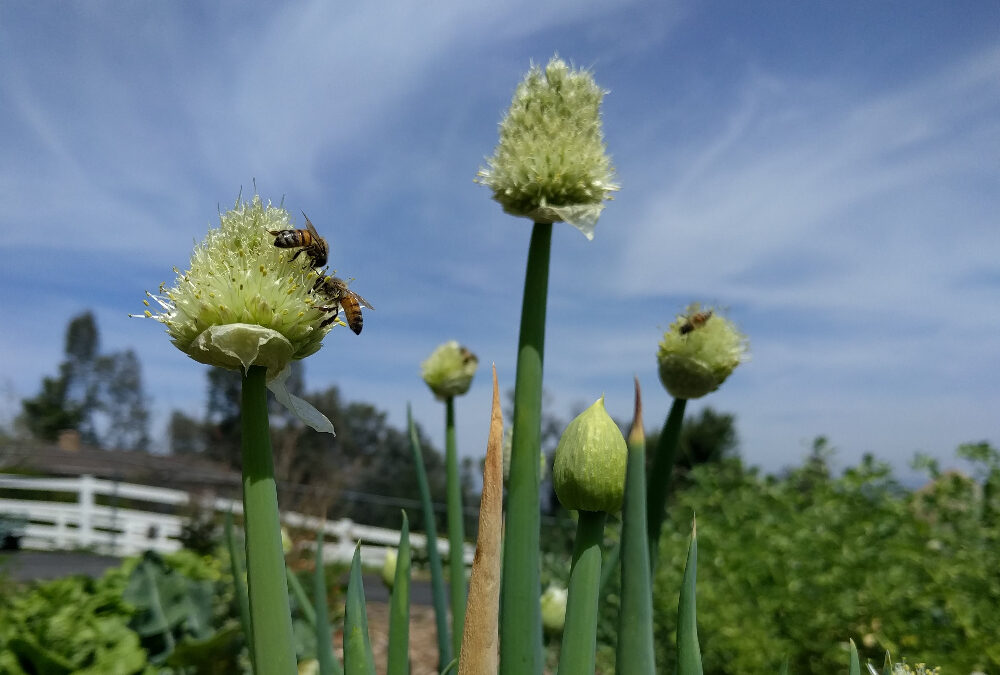
Credit: gregalder.com
Frequently Asked Questions
Why Is My Onion Plant Flowering?
Onion plants flower due to stress, temperature changes, or reaching maturity. Flowering signals the end of bulb growth.
Should I Remove Onion Flowers?
Yes, remove onion flowers to encourage bulb growth. Flowering diverts energy away from bulb development.
Can I Eat Onions After They Flower?
Yes, onions are still edible after flowering. However, they may be smaller and less flavorful.
Conclusion
Flowering in onion plants signals the end of bulb growth. Harvest promptly for best flavor and size. To avoid premature flowering, ensure optimal growing conditions. Understanding these signs helps you manage your crop better. Enjoy fresh, home-grown onions by keeping an eye on your plants’ growth stages.
Happy gardening!

